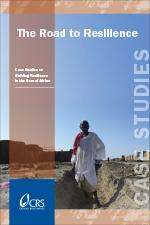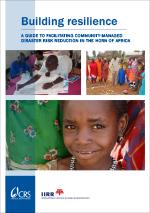About Disaster Risk Reduction and Resilience
WHAT WE DO
CRS ensures that its recovery and development programs build family and community resilience to natural and manmade crises by incorporating relevant elements of Disaster Risk Reduction. In countries that suffer recurrent disasters, CRS facilitates communities and families to more effectively protect their lives and livelihoods and mitigate the effects of disasters.
Disaster Risk Reduction activities focus on preparedness efforts in disaster-prone communities—those hit cyclically by floods, droughts, typhoons, and other crises. CRS works with local leaders and community members in activities, conversations and approaches that help save lives, strengthen community resilience, and prevent lasting damage.
Every $1 spent on disaster preparedness saves $7-$10 in disaster response.
HOW WE DO IT
Reducing Risk and Strengthening Preparedness:
CRS’ approach to Disaster Risk Reduction builds on people’s capacities to better prepare for disaster. Preparation can help save a family a lifetime of savings and assets, as well as protect lives by knowing what to do when disaster strikes. These activities include:
-
Community risk mapping;
-
Establishment of early warning systems;
-
Preparation of evacuation kits; and
-
Developing evacuation plans.
Bolstering Resilience for Recovery:
Long before disasters take place, CRS works with disaster-prone communities on methods and practices that bolster their resilience in disaster’s aftermath, thereby reducing the lasting impact and quickening their speedy recovery. These activities include:
-
Diversifying livelihoods;
-
Protecting assets, such as protecting water sources from contamination in flood prone areas, and promoting safe storage of seed and animal feed;
-
Promoting improved practices that people undertake using their own resources, like modifying the use of locally available building materials to construct disaster resilient housing; and
-
Connecting communities with governments for their response and support in a crisis.
Prioritizing Local Participation, Leadership and Economy:
Community members play a critical role in the conversations, strategies, and leadership that help to protect them in crisis and allow them a safer, speedier recovery. CRS also anchors activities in ways that support the local market—through cash or voucher systems, and other interventions that help to keep the local economy going. This approach contributes to the restoration of the economic fabric, which is a key component of sustainable disaster recovery. At the same time, working with communities to improve housing so that it is more resilient to recurrent disasters protects families when cyclones or other crises strike, and reduces post-disaster reconstruction needs so that people can focus on resuming their lives.
Research & Publications
-
Case Studies
The Road to Resilience
Case Studies on Building Resilience in the Horn of Africa

How can relief and development programs promote resilience in regions that experience recurrent crises? The six case studies in this document describe some of the ways that CRS has responded to challenges in the Horn of Africa. More
-
Manuals
Building Resilience
A Guide to Facilitating Community-Managed Disaster Risk Reduction in the Horn of Africa

This manual describes how to help communities implement disaster risk reduction activities. More

